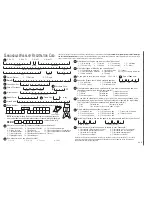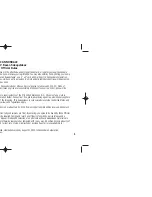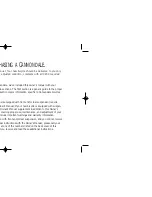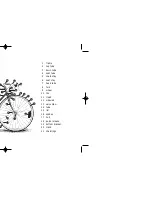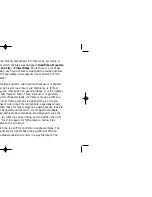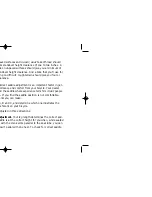
14
2. Front and back adjustment. Loosen the saddle clamping mechanism
(see fig. 6A, B or C) and slide the saddle back or forward on its rails.
Start with the saddle clamped in about the middle, then adjust forward
or back until you find the position which is most comfortable for you.
Then, retighten the saddle clamping mechanism as tight as you can.
3. Saddle tilt adjustment. Most people prefer a horizontal saddle; but
some riders prefer to have the saddle nose tilted up just a little, and
others prefer it to be tilted down just a little. You can adjust saddle tilt
by loosening the saddle clamping mechanism, tilting the saddle to the
desired position, and retightening the saddle clamping mechanism tight
enough so that you cannot move or jiggle the saddle.
Very small changes in saddle position can have a substantial effect on
performance and comfort. Consequently, whenever you make a change
to your saddle position, make only one directional change at a time, and
make the changes in small increments until you have found the position
at which you are most comfortable.
WARNING: After any saddle adjustment, be sure to tighten the
saddle adjusting mechanism properly before riding. A loose
saddle clamp or seat post binder can cause damage to the seat
post, or can cause you to lose control and fall. A correctly tight-
ened saddle adjusting mechanism will allow
no saddle movement
in any direction
. Periodically check to make sure that the saddle
adjusting mechanism is properly tightened.
!
2000 owner's manual 10/27/99 10/27/99 11:16 AM Page 14
Содержание Bicycles
Страница 108: ...4 ...

